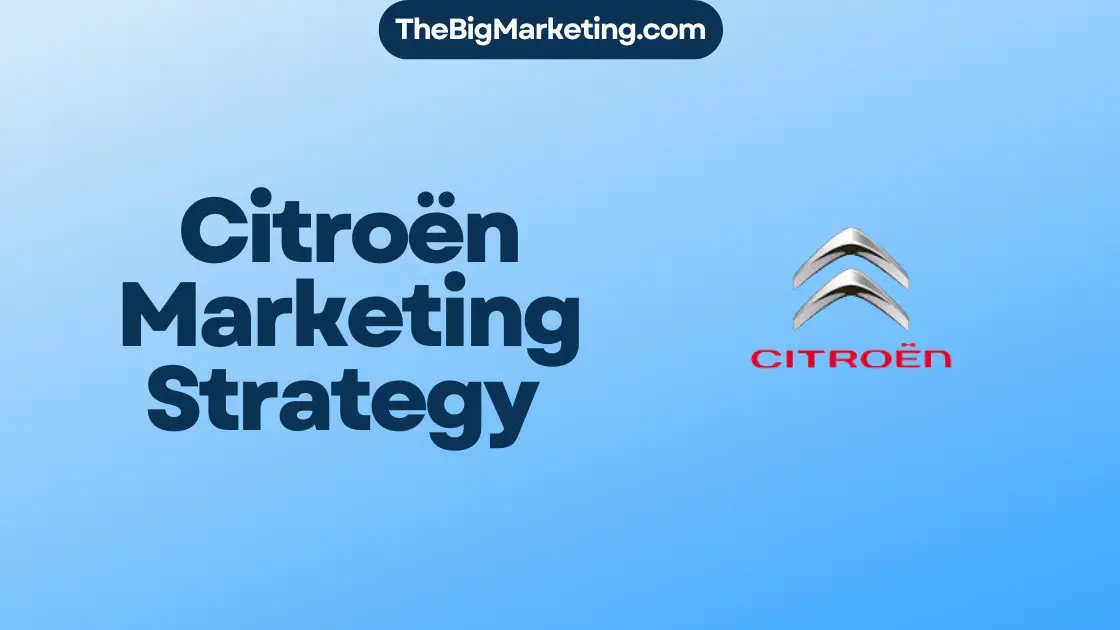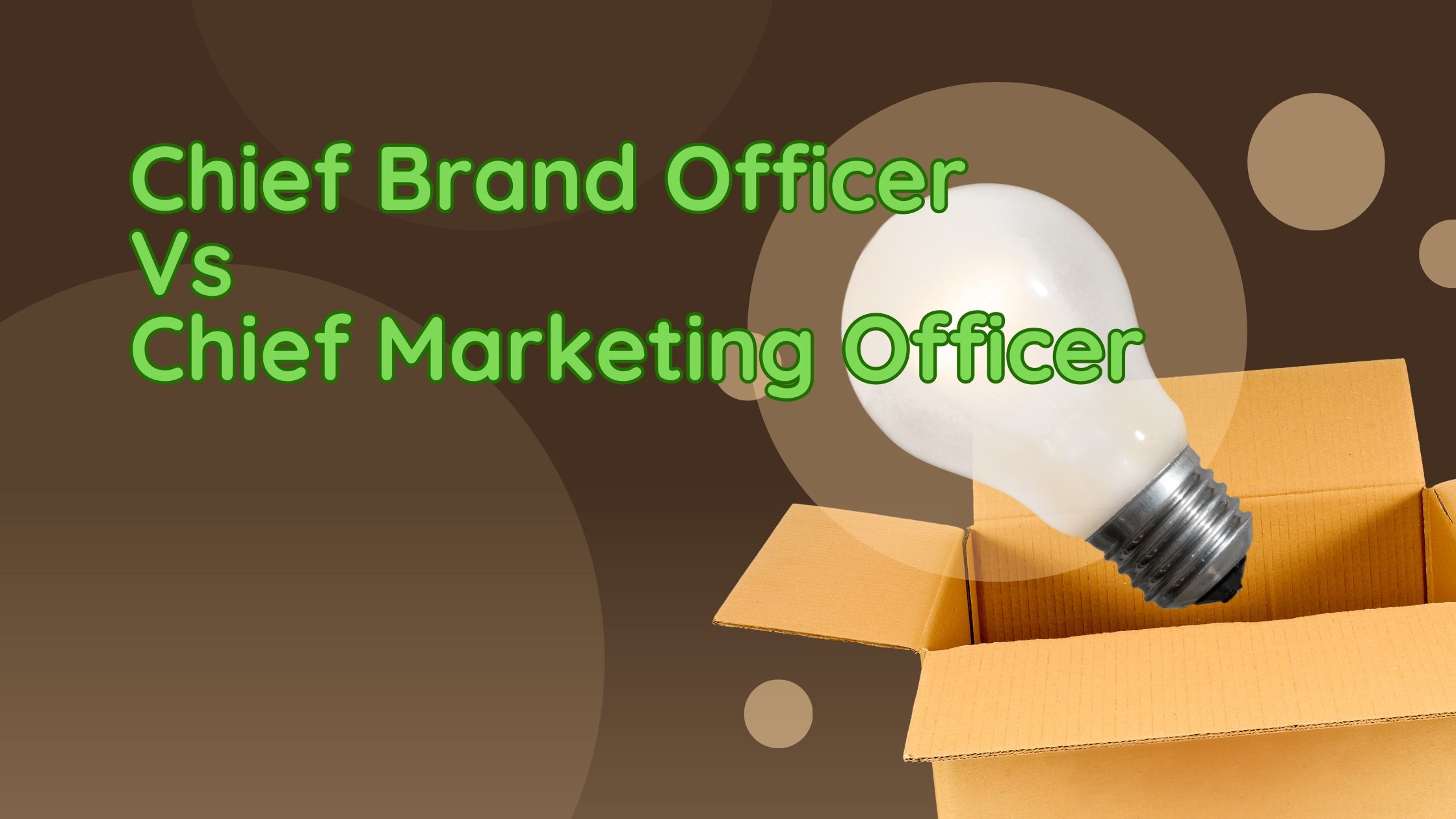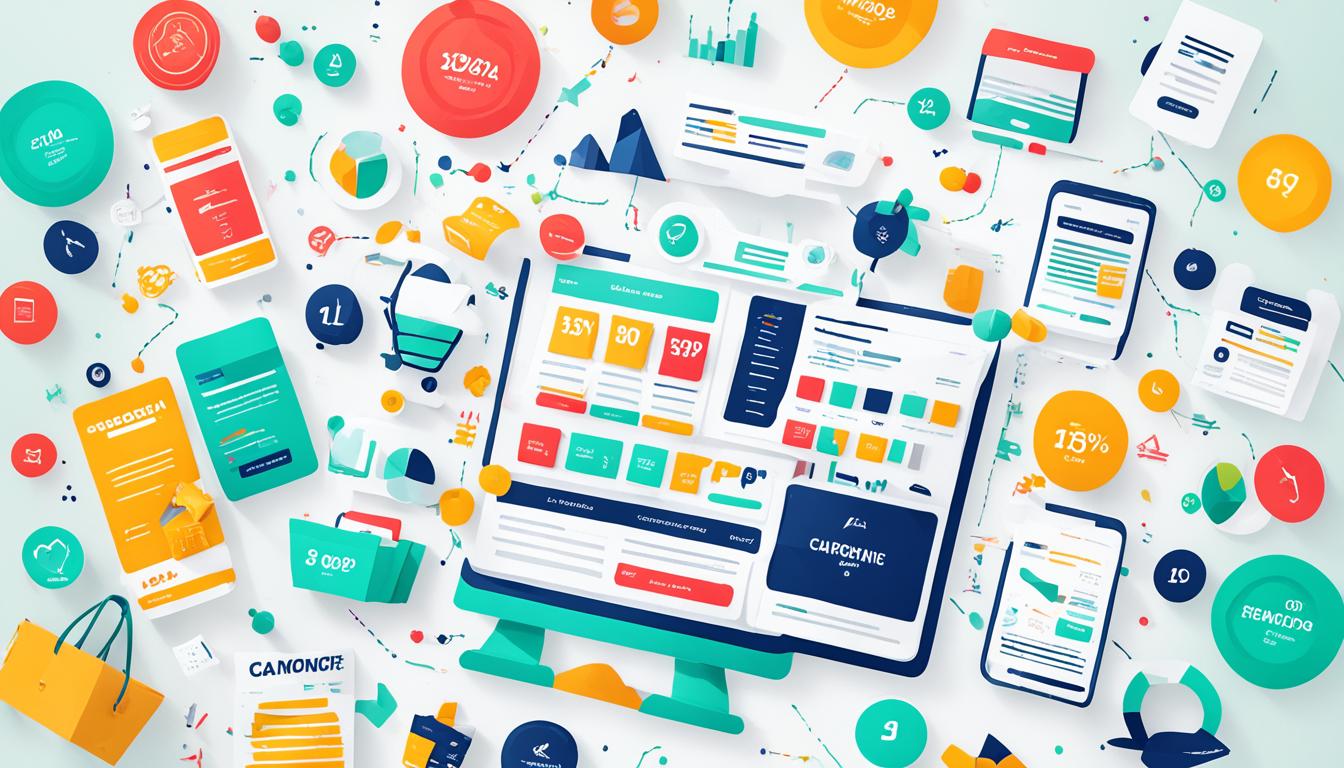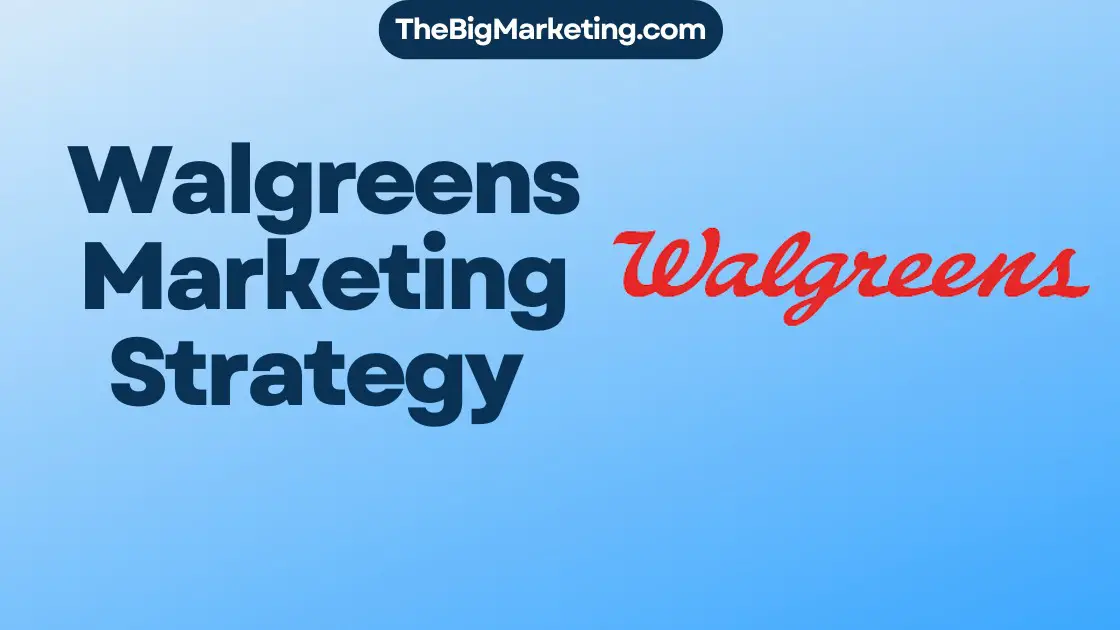The 5 Ps of marketing, also known as the marketing mix, are the core components of a successful marketing strategy. These elements include product, price, place, promotion, and people. Each component plays a crucial role in developing and implementing marketing initiatives that align with business goals and meet customer needs. Understanding the significance of the 5 Ps of marketing can help drive digital marketing success and guide strategic decision-making.
Key Takeaways:
- The 5 Ps of marketing are product, price, place, promotion, and people.
- These elements are essential for developing and implementing effective marketing strategies.
- The marketing mix provides a framework for aligning marketing initiatives with business goals.
- Understanding customer needs and creating value are key considerations in the marketing mix.
- Driving customer engagement and satisfaction is a primary objective of the 5 Ps of marketing.
Product: Creating Value for Customers
The product element of the marketing mix is a critical component of a company’s strategy. It revolves around the items or services that a company offers to its customers. This includes not only the physical product itself but also its design, branding, packaging, quality, features, and benefits. The goal of the product element is to create a valuable offering that meets the needs and wants of the target market.
When designing a product, it is essential to understand the customers’ needs and preferences. By conducting market research and gathering customer insights, companies can identify and address the pain points and desires of their target audience. This allows for the creation of a product that provides unique value and sets it apart from competitors.
Branding is another crucial aspect of the product element. A strong and consistent brand identity helps establish recognition, trust, and loyalty among customers. It enables companies to differentiate their offerings and build a positive perception in the minds of consumers.
The quality of the product is also a key factor that influences customer satisfaction and loyalty. Providing a high-quality product that performs as expected and meets or exceeds customer expectations is essential for building a positive reputation and retaining customers.
Additionally, the features and benefits of a product play a significant role in attracting and retaining customers. Companies must identify the unique features and benefits that their product offers and effectively communicate them to the target audience. This helps highlight the value proposition and convinces customers to choose their product over alternatives.
| Product | Design | Branding | Quality | Features | Benefits |
|---|---|---|---|---|---|
| Product X | Modern and ergonomic design | Well-established brand identity | Strict quality control measures | Innovative features | Improved efficiency and productivity |
| Product Y | User-friendly interface | Unique and memorable branding | Durable and long-lasting | Advanced functionalities | Enhanced performance and versatility |
| Product Z | Sleek and stylish design | Premium and luxury branding | High-quality materials | Customizable options | Personalized experience for customers |
Creating a compelling and valuable product is essential for business success. By focusing on customer needs, design, branding, quality, features, and benefits, companies can develop offerings that resonate with their target market. This positions them as leaders in the industry, drives customer satisfaction and loyalty, and ultimately contributes to long-term business growth.
Price: Setting the Right Value
The price component of the marketing mix plays a vital role in determining the success of a product or service. Setting the right price not only reflects the value it offers to customers, but also considers the strategies employed by competitors and aligns with an organization’s profit goals. To ensure a well-balanced pricing strategy, factors such as cost of goods, profit margins, discounts, and promotional offers must be carefully evaluated and incorporated.
When establishing the price, it’s crucial to assess the value proposition of the product or service. This involves understanding the unique features and benefits it provides to customers and differentiating it from competitors. By strategically positioning the price based on the value it offers, businesses can influence consumers’ perception of the product and drive purchase decisions.
Additionally, analyzing competitors’ pricing strategies is essential for effective pricing decisions. By researching and monitoring the prices set by competitors, businesses can identify opportunities to provide better value or differentiate themselves in the market. This ensures that the price remains competitive while still meeting the organization’s profit margins and goals.
Furthermore, incorporating discounts and promotional offers can be a powerful tool to attract customers and generate sales. These tactics can create a sense of urgency and incentivize customers to make a purchase. However, it’s important to carefully plan and execute these strategies to maintain profitability and avoid undermining the perceived value of the product.
The following table provides an overview of the key factors involved in setting the right price:
| Factors | Description |
|---|---|
| Value | Determining the unique value the product or service offers to customers. |
| Competitors | Analyzing competitors’ pricing strategies and positioning to identify opportunities. |
| Profit Margins | Aligning the price with the organization’s profit goals and desired margins. |
| Discounts | Implementing promotional discounts to incentivize customers and drive sales. |
| Promotional Offers | Crafting strategic promotional offers to create urgency and attract customers. |
By carefully considering these factors and implementing a well-rounded pricing strategy, businesses can effectively set the right value for their products or services. The next section will delve into the importance of accessible and convenient distribution channels in the marketing mix.
Place: Accessible and Convenient Distribution
The place element of the marketing mix focuses on how a product or service is distributed and made available to customers. It encompasses aspects such as distribution channels, logistics, market coverage, and service levels. The goal is to ensure that the product is easily accessible and available at the right time and place for the target audience. Companies may use various distribution methods, including brick-and-mortar stores, online marketplaces, or direct-to-consumer models, to reach their customers effectively.
Having a well-planned distribution strategy is vital for reaching customers and maximizing market coverage. Companies must consider the target market’s preferences, behaviors, and accessibility when determining the most appropriate distribution channels. By strategically selecting the right channels, businesses can effectively deliver their products or services to customers, ensuring ease of purchase and convenience.
Logistics play a crucial role in the distribution process. Efficient supply chain management and well-coordinated logistics operations are essential for ensuring smooth product flow from production to customer delivery. Factors such as warehousing, transportation, order fulfillment, and inventory management contribute to cost-effective distribution and timely product availability.
Market coverage is another key consideration for achieving effective place strategy. Companies need to assess the size and demographics of their target market, as well as their competitors’ reach, to develop a distribution plan that ensures comprehensive market coverage. By understanding customer locations and behaviors, businesses can strategically position their products in the right locations to maximize reach and accessibility.
The Impact of Distribution Channels on Accessible Distribution
A crucial aspect of place strategy is determining the most suitable distribution channels to reach the target audience. Different distribution channels offer unique opportunities for accessibility and convenience. Let’s explore some common distribution channels:
- Brick-and-Mortar Stores: Physical retail locations provide immediate access to products for customers in local areas. These stores allow customers to see, touch, and try products before making a purchase. Retailers can leverage their store presence to offer personalized customer service and enhance the shopping experience.
- Online Marketplaces: E-commerce platforms such as Amazon, eBay, and Alibaba provide a vast online marketplace where businesses can showcase and sell their products to a global customer base. Online marketplaces offer convenience, accessibility, and the ability to reach customers beyond geographical boundaries.
- Direct-to-Consumer (D2C) Model: With the rise of digital marketing and e-commerce, many companies have adopted the D2C model. By selling directly to customers through their own websites or online platforms, businesses can have more control over the customer experience and build direct relationships with their audience.
- Distributors: Collaborating with distributors can expand the reach of products through established distribution networks. Distributors have existing relationships with retailers and can ensure widespread product availability in various geographical locations.
Companies must carefully evaluate and choose distribution channels that align with their target market and product offerings. It’s essential to consider factors like the target audience’s online behavior, geographic reach, and existing distribution partnerships. By strategically selecting distribution channels, businesses can achieve broad market coverage and ensure their products are easily accessible to customers.
Service Levels and Accessibility
Service levels are a critical aspect of accessible distribution. Providing excellent customer service and ensuring accessible support channels can enhance the overall customer experience. Some factors to consider when focusing on service levels include:
- Customer Support: Offering accessible and responsive customer support channels like phone, email, or live chat ensures customers can get assistance and clarification when needed. Prompt and efficient customer service can build trust, loyalty, and satisfaction.
- Convenient Returns and Exchanges: Having a seamless returns and exchanges process can instill confidence in customers and remove barriers to making a purchase. Simplified return policies and hassle-free processes contribute to customer satisfaction and repeat business.
- Accessibility for Special Needs: Considering the accessibility needs of all customers is crucial. Offering options such as accessible website design, multilingual support, and accommodating special needs can help ensure equal access to products and services.
- Delivery Speed and Options: Fast and reliable delivery options, including expedited shipping or same-day delivery, can provide customers with convenience and a sense of urgency. Offering flexible delivery choices, such as click-and-collect or courier services, can cater to customers’ diverse needs and preferences.
By focusing on service levels and incorporating accessibility features, businesses can remove barriers to customer engagement and ensure a positive experience throughout the distribution process.
Comparison of Distribution Channel Characteristics
| Distribution Channel | Market Coverage | Accessibility | Customer Reach |
|---|---|---|---|
| Brick-and-Mortar Stores | Local or regional | In-person access | Specific geographic areas |
| Online Marketplaces | Global | 24/7 access, worldwide | Wide-ranging customer base |
| Direct-to-Consumer (D2C) Model | Global | Online access | Direct customer relationships |
| Distributors | Wide-ranging | Varies based on distribution network | Increased market penetration |
Promotion: Building Awareness and Interest
In today’s competitive business landscape, effective promotion is essential for building awareness, generating interest, and driving customer engagement. Companies employ various marketing tactics to achieve these objectives and successfully promote their products or services. Let’s explore the key elements of promotion and the marketing tactics that can be used to capture consumer attention and compel them to take action.
1. Advertising
Advertising plays a crucial role in promotion by utilizing various media channels to deliver targeted messages to the intended audience. Through strategic ad campaigns, businesses can increase brand visibility, create awareness, and convey the unique value proposition of their offerings. Online advertising, print ads, television commercials, and radio spots are some examples of advertising channels that can be used to effectively reach and influence potential customers.
2. Sales Promotions
Sales promotions are marketing tactics aimed at incentivizing consumers to make a purchase or take advantage of a limited-time offer. These promotions can include discounts, coupons, buy-one-get-one-free offers, loyalty programs, and limited-time sales events. By creating a sense of urgency and perceived value, sales promotions can generate immediate interest and drive customer conversions.
3. Public Relations
Public relations (PR) efforts are key in shaping a company’s public image and building positive relationships with the target audience. PR activities can include press releases, media coverage, influencer partnerships, event sponsorships, and community engagement. A well-executed PR strategy not only enhances brand reputation but also generates positive word-of-mouth, leading to increased credibility and customer trust.
4. Digital Marketing
Digital marketing has become an integral part of promotion in the modern age. It encompasses various tactics such as search engine optimization (SEO), social media marketing, content marketing, email marketing, and influencer collaborations. Digital marketing allows businesses to reach a wider audience, engage with potential customers, and track the effectiveness of their marketing campaigns through analytics. Utilizing the power of digital channels, companies can create targeted and personalized promotional messages that resonate with their audience.
5. Personal Selling
Personal selling involves direct interaction between a sales representative and potential customers. This promotional method allows for personalized communication, addressing specific customer needs and concerns, and building relationships. Personal selling is often employed in industries where complex or high-value products require a more consultative approach, such as real estate or enterprise software sales.
Effective promotion strategies combine these marketing tactics in a cohesive and well-coordinated manner. By leveraging advertising, sales promotions, public relations, digital marketing, and personal selling, businesses can build brand awareness, generate customer interest, and ultimately drive revenue growth.
Comparison of Promotion Tactics
| Promotion Tactics | Key Benefits | Examples |
|---|---|---|
| Advertising | Increased brand visibility, targeted messaging | Online ads, television commercials |
| Sales Promotions | Incentivize purchases, create a sense of urgency | Discounts, coupons, loyalty programs |
| Public Relations | Enhanced brand reputation, increased credibility | Press releases, media coverage, event sponsorships |
| Digital Marketing | Wide reach, targeted messaging, measurable results | SEO, social media marketing, content marketing |
| Personal Selling | Personalized communication, relationship-building | Direct sales interactions |
People: Building Positive Relationships
The people element of the marketing mix focuses on the individuals involved in the production, distribution, and consumption of a product or service. These individuals include employees, customers, suppliers, and partners. Building positive relationships with these stakeholders is crucial for business success.
For employees, companies can invest in their training and development to enhance their skills and knowledge. By providing a supportive work environment, companies foster employee satisfaction and loyalty, which ultimately translates to better customer service and product quality.
Customers are the lifeblood of any business. By gathering and listening to customer feedback, companies can gain valuable insights into their preferences, needs, and pain points. This information can be used to improve products and services, tailor marketing initiatives, and build long-term customer relationships.
Suppliers are essential partners in the value chain. By establishing strong partnerships, companies can ensure a reliable supply of quality materials or resources. This, in turn, improves product or service quality and delivery to customers.
Collaborating with strategic partners can provide additional growth opportunities. By leveraging the expertise, resources, and networks of partners, companies can expand their reach, offer complementary products or services, and enhance the overall customer experience. Such partnerships can create a win-win situation, driving mutual growth and value.
Benefits of Building Positive Relationships:
- Enhanced product quality: Positive relationships with employees, suppliers, and partners contribute to the development of high-quality products or services that meet customer expectations.
- Improved customer satisfaction: By understanding and addressing customer needs, companies can provide personalized experiences, leading to higher customer satisfaction and loyalty.
- Brand reputation: Positive relationships with all stakeholders contribute to a strong brand reputation, which attracts new customers and reinforces trust among existing customers.
- Collaborative innovation: Building relationships with partners fosters collaborative innovation, allowing companies to stay at the forefront of industry trends and offer unique solutions.
- Long-term loyalty: Positive relationships create a sense of trust and loyalty among stakeholders, resulting in long-term partnerships and repeat business.
| Stakeholders | Key Actions | Benefits |
|---|---|---|
| Employees | Invest in training and development Gather feedback and address concerns Create a positive work environment |
Improved product quality Enhanced customer service Higher employee satisfaction and retention |
| Customers | Gather and listen to customer feedback Provide personalized experiences Build long-term relationships |
Increased customer satisfaction and loyalty Enhanced brand reputation Repeat business and referrals |
| Suppliers | Establish strong partnerships Regular communication and collaboration Ensure fair and timely payments |
Reliable supply of quality materials Improved product or service delivery Cost and efficiency advantages |
| Partners | Identify strategic partnerships Share resources and expertise Create mutually beneficial opportunities |
Expanded reach and market presence Enhanced customer experience Collaborative innovation |
Process: Ensuring Smooth Operations
A well-defined and efficient process is a crucial component of successful marketing. The process, an additional element in the marketing mix, encompasses the entire journey of delivering products or services to customers. It involves various stages, including design, creation, efficiency, and quality control, that contribute to smooth operations and a consistent customer experience.
When it comes to the design process, companies strive to create products or services that align with customer preferences and needs. Through thorough research and a deep understanding of target markets, businesses can develop offerings that resonate with their audience and provide value.
Efficiency plays a significant role in the process as well. Streamlining operations and eliminating unnecessary steps can improve productivity and reduce costs. By optimizing workflows, businesses can enhance their ability to meet customer demands promptly and deliver products or services in a timely manner.
Quality control is another critical aspect of the process. Companies need to ensure that their offerings meet the highest standards of quality and reliability. Implementing rigorous quality control measures helps identify and rectify any issues before products or services reach customers, maintaining customer satisfaction and loyalty.
Ultimately, an effective process enhances a company’s ability to deliver quality products or services efficiently, meeting customer expectations consistently. By evaluating and refining their processes, businesses can enhance their efficiency, reduce costs, and exceed customer expectations.
Physical Evidence: Tangible Proof of Value
Physical evidence is a critical component of the marketing mix, particularly for businesses that offer tangible products or services. It encompasses the tangible elements that customers can see, touch, or experience firsthand. These tangible elements include packaging, presentation, and proof of delivery.
Tangible Elements
When it comes to physical evidence, tangible elements play a crucial role in shaping customer perception and satisfaction. Good packaging and presentation not only protect the product but also contribute to branding and differentiation. A well-designed package can catch the customer’s eye, communicate the product’s value, and create a positive first impression. The overall presentation, including visual aesthetics, organization, and cleanliness, further enhances the customer experience and reinforces the perceived value of the offering.
Proof of Delivery
Physical evidence also serves as tangible proof of delivery. In a world where customers increasingly value transparency and reliability, providing proof of delivery can instill trust and enhance customer satisfaction. Whether it’s a timestamped receipt, a tracking number, or a delivery confirmation, these elements offer reassurance that the product has been safely received and fulfill the promises made during the purchasing process.
Image: Physical Evidence in Action
Table: Examples of Effective Packaging
| Product | Packaging Design | Impact |
|---|---|---|
| Apple iPhone | Sleek and minimalist design with high-quality materials | Enhances brand perception and creates a premium experience |
| Tiffany & Co. Jewelry | Distinctive blue box with a white satin ribbon | Instantly recognizable and conveys luxury and elegance |
| Amazon Prime | Secure and eco-friendly packaging with smile logos | Creates a positive unboxing experience and reinforces brand loyalty |
Effective packaging not only protects the product during transit but also creates a memorable and delightful unboxing experience. It can reinforce the brand’s values, differentiate the product from competitors, and leave a lasting impression on the customer.
In conclusion, physical evidence in the marketing mix plays a crucial role in establishing the value proposition of a product or service. By carefully considering packaging, presentation, and providing proof of delivery, businesses can enhance brand perception, differentiate themselves from competitors, and reinforce customer trust and satisfaction.
Partners: Collaborative Growth Opportunities
Partnerships and collaborations are key to the success and growth of a business. By working with distributors and marketing partners, companies can expand their reach and tap into new markets.
Partnering with distributors allows companies to leverage their existing networks and infrastructure to effectively distribute products to a wider audience. This collaboration streamlines the distribution process and ensures that products are readily accessible to customers.
Marketing partners play a crucial role in enhancing brand visibility and promoting products or services. Collaborating with marketing partners can result in joint marketing campaigns that leverage both parties’ resources and expertise, increasing the overall reach and impact of promotional activities.
Additionally, partnerships enable businesses to improve customer service by leveraging the expertise and capabilities of their partners. Through these collaborations, companies can provide enhanced customer support, resulting in increased customer satisfaction and loyalty.
Identifying and establishing strategic partnerships is an opportunity for businesses to expand their reach, drive revenue growth, and strengthen their position in the market. By leveraging the strengths and resources of their partners, companies can achieve mutual success and create a win-win situation.
Payment: Convenient and Secure Transactions
In today’s digital age, convenient and secure payment options play a crucial role in ensuring smooth transactions for businesses and customers alike. The payment element, often referred to as the “forgotten P” of the marketing mix, encompasses the various methods through which customers can make monetary transactions.
When it comes to payment methods, businesses need to offer a range of options that cater to different customer preferences. These options can include:
- Cash: Traditionally, cash has been a widely accepted form of payment. It provides customers with ease and simplicity in making transactions, particularly for in-person purchases.
- Credit Cards: Credit cards offer convenience and flexibility for customers, allowing them to make purchases and pay for them later. Accepting major credit cards provides a seamless shopping experience and opens doors to a broader customer base.
- Online Payment Platforms: With the rise of e-commerce, online payment platforms such as PayPal, Apple Pay, and Google Pay have become popular choices for customers. These platforms offer convenience, security, and seamless integration with online shopping carts.
Providing customers with convenient and secure payment options offers several benefits. Firstly, it enhances the overall customer experience by allowing them to choose the payment method that suits them best. This flexibility can lead to increased customer satisfaction and repeat purchases.
Moreover, offering secure payment options builds trust between businesses and customers. With the increasing prevalence of online fraud and identity theft, customers are more cautious when sharing their financial information. By adopting secure payment platforms and implementing robust security measures, businesses can reassure customers and alleviate their concerns.
From a business perspective, convenient and secure payment methods streamline operations and simplify financial reconciliation. By leveraging digital payment platforms, businesses can automate payment processes, reduce the risk of errors, and enhance efficiency.
It’s important for businesses to evaluate the payment methods they offer and ensure they align with customer needs and expectations. By staying updated with the latest payment trends and technologies, businesses can provide a seamless and convenient payment experience, ultimately driving customer loyalty and business growth.
| Payment Method | Advantages | Disadvantages |
|---|---|---|
| Cash | – Easy and quick – No transaction fees – Widely accepted |
– Risk of theft or loss – Not suitable for online transactions |
| Credit Cards | – Convenience and flexibility – Allows deferred payments – Offers rewards programs |
– Transaction fees for businesses – Risk of credit card fraud |
| Online Payment Platforms | – Seamless integration with e-commerce – Enhanced security measures – Wide range of supported currencies |
– Transaction fees for businesses – Requires customers to have accounts |
Packaging: Enhancing Branding and Sales
Packaging plays a vital role in product marketing, especially for businesses that offer physical products. It encompasses the physical appearance and presentation of the product, which can significantly impact branding and sales. Effective packaging goes beyond mere protection of the product; it serves as a powerful tool for differentiation and capturing customer attention.
When designing packaging, businesses must consider its physical appearance and presentation. The packaging should be visually appealing, aligning with the brand’s aesthetics and conveying a sense of quality. By incorporating elements of color, typography, and imagery, businesses can create packaging that stands out on the shelves and captures the customers’ interest.
Moreover, packaging is an opportunity to reinforce branding. By incorporating the brand’s logo, visual identity, and messaging, businesses can create a cohesive brand experience that extends beyond the product itself. Consistent branding across packaging and other marketing materials helps establish brand recognition and enhances the overall perception of quality and trust.
Differentiation is crucial in a competitive market. Packaging offers a platform for businesses to differentiate their products from competitors. Unique packaging design, innovative features, or eco-friendly materials can set a product apart and attract customers seeking something different. By strategically leveraging packaging as a differentiating factor, businesses can gain a competitive edge and increase market share.
Ultimately, an effective packaging strategy can drive sales. Customers often make purchasing decisions based on first impressions. Well-designed packaging that communicates the product’s value proposition and aligns with the target audience’s preferences can influence those decisions positively. Furthermore, functional packaging that is easy to open, use, and store enhances the customer experience and encourages repeat purchases.
The Role of Packaging in Enhancing Branding and Sales
Packaging serves as a critical touchpoint between a brand and its customers. It goes beyond merely containing the product; it is a representation of the brand’s identity, values, and promise. The visual appeal, quality, and functionality of packaging shape how customers perceive the brand and its products.
Table: Benefits of Effective Packaging
| Branding and Differentiation | Sales and Conversion |
|---|---|
| Enhances brand recognition | Increases impulse purchases |
| Conveys brand values and identity | Improves product shelf visibility |
| Creates a unique and memorable brand experience | Attracts attention in crowded markets |
| Sets the product apart from competitors | Encourages repeat purchases and brand loyalty |
To optimize the impact of packaging on branding and sales, businesses should invest in market research, design expertise, and consumer insights. Understanding the target audience’s preferences and expectations is crucial for creating packaging that resonates with them. Additionally, conducting thorough competitor analysis helps identify gaps in the market and opportunities for differentiation.
By leveraging packaging as a strategic tool, businesses can enhance their branding efforts, differentiate their products, and drive sales. Attention to packaging design, physical appearance, and functionality can create a lasting impression on customers and contribute to long-term business success.
Conclusion
The 5 Ps of marketing, along with the additional Ps, provide a comprehensive framework for developing and implementing an effective marketing strategy. Each element – product, price, place, promotion, people, process, physical evidence, partners, payment, and packaging – plays a crucial role in understanding customer needs, creating value, building awareness, and driving business growth.
By aligning marketing initiatives with business goals and focusing on customer satisfaction, companies can enhance their overall marketing efforts and achieve digital marketing success. The 5 Ps of marketing serve as a foundation for strategic decision-making and goal alignment in the ever-evolving business landscape.
With the correct alignment of marketing strategy, businesses can drive customer satisfaction, increase market share, and achieve their goals. It is important for companies to constantly evaluate and adapt their marketing mix to stay competitive and meet the changing needs of their target audience. Ultimately, a well-executed marketing strategy that integrates the 5 Ps and the other additional Ps can be a key driver of business success.






